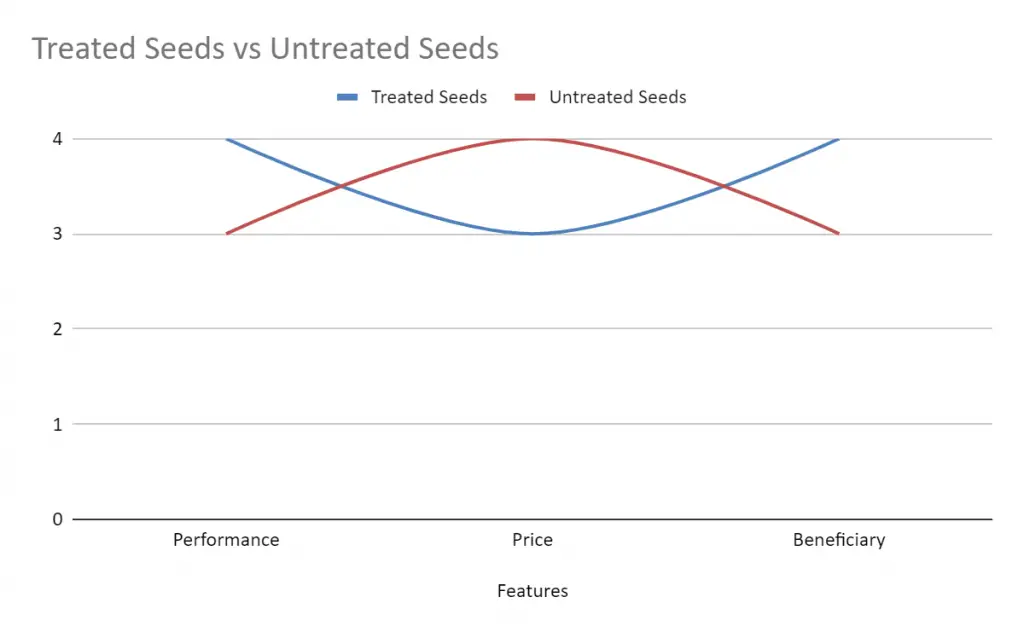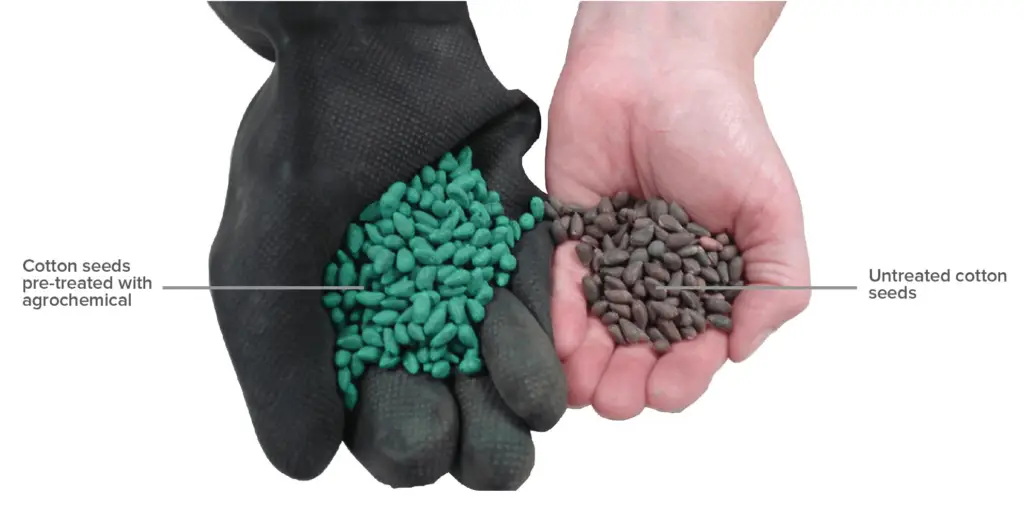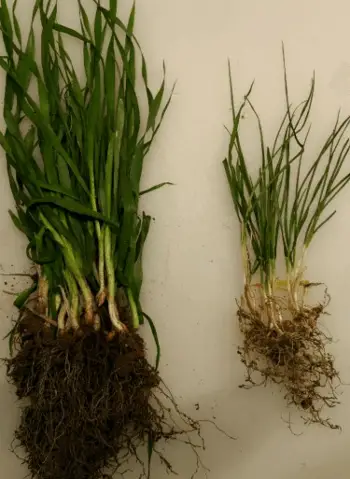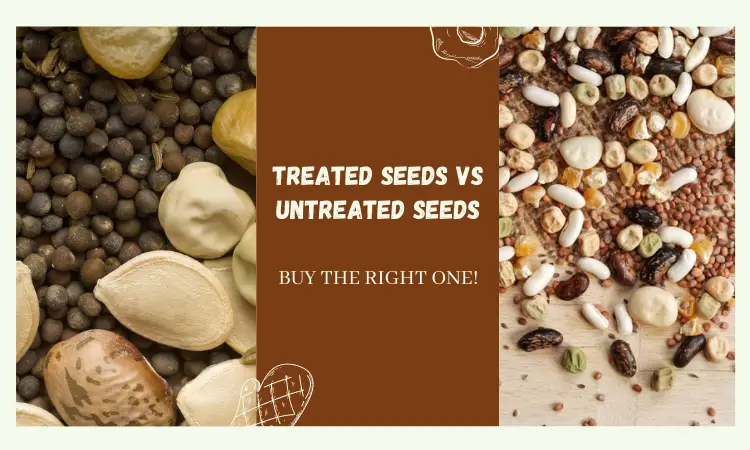Deciding which seed to pick between treated and untreated can be difficult. You might grow fewer and weaker crops if you don’t select the proper seeds. So, in conclusion, you’ll face a big fat loss.
Now the question is which one should you pick- treated seeds vs Musculation et alcool : font-ils bon ménage ? qualite methenolone acetate primobolan avec expedition diète et maître de musculation wallace spiega untreated seeds?
Well, unlike treated seeds, untreated seeds are clean and chemical-free. Untreated seeds are cheaper but they yield weaker and smaller crops compared to treated seeds. Treated seeds have a better germination rate than untreated ones. However, if we talk about everyone’s safety while gardening then untreated seeds win.
This is just a small part of the comparison. We’ve given all the proper and necessary details about the two seeds in this article.
Thus, to have a greater knowledge as a gardener, you might want to check our detailed article out-
Treated Seeds and Untreated Seeds Definition
Before we jump into all the details, it’s important to clear out some basics at first. We know that most of you already know what these seed types are.
But still, we felt that it’s super important to clear out some myths and all.
So, what in the world are treated and untreated seeds?
Well, treated seeds are processed and packaged using hot water, biological or chemical methods. Insecticide, fungicide, and micronutrients are coated on the seeds to reduce crop damage and produce healthy crops. The seeds are bright-colored as they are coated with chemicals.
To know more about the benefits of treated seed technology watch the following video-
On the other hand, untreated seeds aren’t processed by using chemical or biological methods before being packaged. These seeds don’t have any micronutrients or chemical elements to help them mature into plants. They also don’t come in bright colors.
Difference between Treated and Untreated Seeds- Sneak Peek
Now that we’ve gone through the basics it’s time to get a quick look at the prime differences. It’s obvious that one’s treated and the other’s not. But what other differences do they have?
One thing while comparing two things is that it’s super easy to get lost between the details. Whether it is a difference between rock phosphate and bone meal or in between seeds. It’s pretty common to get lost in translation.
So, to ease up things for you, we’ve built this concise comparison. Now, let’s get to it without wasting any more time.
Nope, not calling it a day already! After all, there are tons of surprises to roll yet. But before getting into the nitty-gritty you can look at the following graph-

Erm…if you wanna cheat a little and already wanna crack the end-result then directly move into that section. If not then let’s just swoop into the next section!
Treated Seeds vs Untreated Seeds: Detailed Comparison
As we’ve learned the different characteristics of untreated and treated seeds, we can proceed towards a detailed comparison between both-

Crop or Plant Damages
As our plant grows, we get to see various types of insects, fungus, and diseases paying unwanted visits. Now, we like it or not, they are here to mess up things for us.
However, if we’re using treated seeds to grow plants then our plants are safe. How?
Well, the seed treatments used while processing these seeds are the reason for that.
For example, if we plan to grow tomatoes, we can use Trisodium Phosphate treatment also known as TSP. The benefit of this treated seed is that it’ll fight TMV(tomato mosaic virus).
Anyway, on the contrary, 50-60% of the time, untreated seeds have difficulty while maturing. As they have no extra nutrients with them, the future plant can come out as weak and fragile. And as a result, these plants get more prone to insects and other troubles.
And to tackle that, we need to follow the ideal plant growing conditions if we choose untreated seeds. And believe us when we say that maintaining the conditions is super tough if you’re not that passionate about plants and all.
For example, setting up an air-cooled hood ventilation system and properly using tools like full-spectrum bulbs are important to grow untreated seeds.
However, here are some of our best-recommended fertilizers to protect your untreated seed plants. Have a look-
However, even with all these fertilizers, it is quite difficult to maintain untreated seeds.
Winner: Treated seeds
Germination Rate
It’s proven by farmers and gardeners that treated seeds’ germination rate is better than untreated seeds.
The term germination means the development process of a plant. Simply put, the time a seed takes to develop into a plant.
To understand better, Let’s do a comparison between treated and untreated corn seeds.
April-May is the best time to plant and grow corn. As it’s summertime and there will be enough sunlight for the corn to grow healthily. But, if you live in a cool area or you want to grow corn indoors, you might face problems.
However, let’s assume we’re using the seed treatment called “Take Off ST” and we’re also using untreated seeds for growing corn indoors. We’ve fixed the temperature for both seeds to 70 degrees Fahrenheit (day) and 60 degrees Fahrenheit (night).
Now let’s see how the two different seeds grow in 20 days.
| Variables | Treated | Untreated | Increase (treated seeds) |
|---|---|---|---|
| Combined dry weight of the whole plant | 18.56 grams | 15.70 grams | 18% |
| Total corn leaf measurement | 2091 cm² | 1794 cm² | 12.5% |
| Nitrogen uptake | 15% |
A fact to remember, these numbers can change depending on the seed treatment we’re using.
But we’ll always get a better number if we use treated seeds. Because the treated corn seeds will have better germination, emergence, and establishment than untreated ones.
However, you can use the following germination kit to observe and control the growth of your untreated seeds-
- MIXC germination kit– adjustable vents of this seed trays allow you to regulate the temperature and humidity of your seedling environment
- Jump Start CK64050 Germination Station– vented dome helps to maintain just the right amount of humidity
Winner: Treated seeds
Size of the Plants
The size of a plant tells one how strong the plant is. Moreover, a bigger and thicker plant lives longer than a fragile-looking plant.
Treated seeds help to produce better quality plants and crops about 70% of the time. By using them, we’ll get not only larger but also thicker crops and plants. As a result, in the future, these crops and plants will be able to prevent themselves from falling prey to diseases easily.
We might not always get healthy-looking crops and plants if we use untreated seeds. Having no helping hands such as micronutrients or chemicals is one of the biggest reasons for little development in the seed’s germination period. Hence, the plant looks smaller and thinner.

The plant on the left is the result of using treated seeds. And the plant on the right is the result of using untreated seeds. You can clearly see which plant looks healthier.
That’s in order to get healthy plants from your untreated seeds you would need to chip in more. Because here are some micronutrients that you should definitely get for your plants’ better health and growth.
Winner: Untreated seeds
Varieties
Both of the seeds have a wide range of varieties.
For treated seeds, the variation can depend on seed treatment. We can find a lot of treated vegetable seeds. Such as-
- Gardentrends corn seeds
- Gardeners cabbage Seeds
- Purple Queen Heirloom Bush Green Bean
- Zipper Cream Pea Seeds
All of these are treated with fungicide, or micronutrients or hot water.
Whereas, untreated seeds have good-performing hybrids and unique plants. We can easily find untreated vegetables, flowers, and fruit seeds. For example- untreated broccoli seeds have varieties like- green magic broccoli, calabrese broccoli, Di Cicco broccoli, etc.
Dear flower lovers, we also recommend that you choose untreated seeds to grow flowers organically in your indoor garden space. Because treated flower seeds carry the chemicals even after blooming. This is something to be wary of in case you or others want to stop and smell the flowers. So, going with the untreated ones is the right choice.
Winner: Untreated seeds
Safety
The safety of the gardener and the plants is very important while gardening. If we start with treated seeds, you might have a question like- are treated seeds safe?
Well, they will cause harm if we keep them on an open surface. Because after all, they are coated with chemicals. These seeds can be poisonous to bees, birds, and even humans. That’s why it’s important to know how to stay safe with treated seeds. And when I’m using treated seeds I use BronaGrand Microcentrifuge Tubes to contain them safely from kids and pets.
Besides, using the wrong chemical coated seed can also backfire. Let’s assume, you are using a fungicide treated seed. A fungicide-coated seed works wonders if there’s an absolute chance of the seed or the crop getting affected by fungus.
But if that’s not the case, you shouldn’t use it. Using the wrongly treated seed will harm your plant pretty badly. Simply put, the plant will die even before maturing. Sometimes, you can even come across seeds treated with poison.
Fortunately, you won’t face any of these scary problems if you use untreated seeds. These seeds are clean and chemical-free. It’s both human and environment friendly. Nonetheless, you might need to use fertilizers and chemicals afterward for better growth and yield. Therefore, they aren’t completely free of chemicals.
More than 50% of indoor gardeners choose untreated seeds over treated ones even after all the benefits. To be honest, it’s understandable because their own safety comes first.
Winner: Untreated seeds
Price
It’s kind of obvious that treated seeds are a little more expensive than untreated seeds. Because the chemical or the biological seed treatment methods need more work and time.
Treated seeds start from $12 and go up to $30. In contrast, good quality untreated seeds and non-GMO seeds start from $2.5 and go up to $20. However, price changes from time to time.
Winner: Untreated seeds
The Results: Treated vs Untreated Seeds
Brace yourself! It’s time to reveal the results.
As we’ve gone through all the details, you might have assumed the consequences. Let’s clear the assumptions.

Even if the picture is of an outdoor farm, it’s still the same for indoor gardens.
Now as we can see, the left part is the result of the treated seeds. The crops look green and livelier. The treated side will grow more and live for a longer time.
The right side which is obviously the untreated one looks dry. The crops have already reached their maximum limit of growth. And unfortunately, they will soon die.
Nevertheless, we might get the complete opposite result if we use treated seeds coated with the wrong chemical. It would be like using spinosad on a perfectly insect-free plant.
For example, the seed will take more time to grow and come out as fragile-looking. As we’ve mentioned for untreated seeds, these weak plants will die soon as well.
So, to avoid such a situation, we should learn where to use which treated seed. Factors such as- soil, temperature, weather are important for the selecting process.
For example, we shouldn’t use micronutrient coated seeds, if our soil has these necessary nutrients-
- Nitrogen,
- Phosphorus,
- Potassium,
- Calcium,
- Magnesium and
- Sulfur.
At last, for your comfort, we’ve mentioned our favorite treated seed and untreated seed-
As long as we’ve got an ideal planting area with the necessary tools and elements, we can use the untreated ones. And we’ll also get a good result!
FAQs
Should I use treated or untreated pumpkin seeds?
If you believe in “Prevention is better than cure” then you might want to use treated seeds. And if not, then move ahead with untreated seeds.
What is seed treatment?
Seed treatments are basically the process by which one produces treated seeds. A seed can be treated by soaking it in hot water. Or by using chemical or biological methods. Seed treatments transform the seed into a better-quality seed.
Are treated seeds considered organic?
Well, no treated seeds aren’t considered organic. Organic seeds are untreated. And sometimes treated with only the allowed substances that are on the National List of Allowed and Prohibited Substances.
Endnote
That’s all we could provide on the treated seeds vs untreated seeds debate. Now, let us know what you took away from the article.
So, which seed do you think is better and you would use for your garden?
Comment your precious comment down below. Good luck in choosing the right seed!










